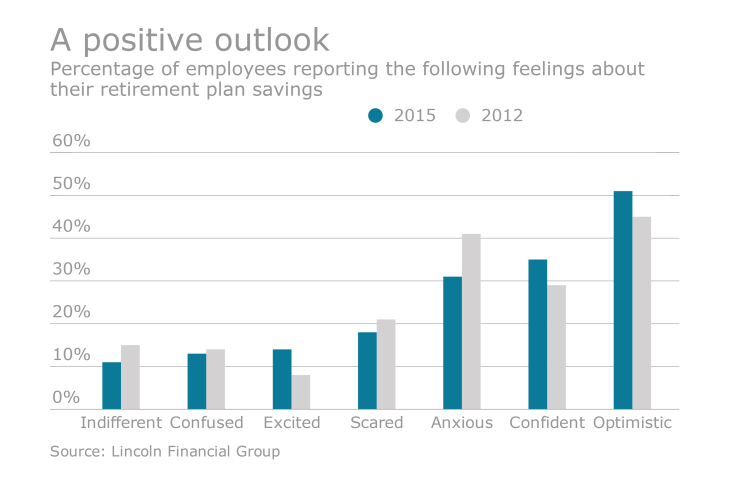Because of retirement plan litigation and fee disclosure rules, there has been a major decline in 401(k) plan fees the past few years.
“This past year there was a slight change in that trend, but it may only be temporary,” says Ross Bremen, CFA, and a partner at NEPC, LLC, an independent, full-service investment consulting firm headquartered in Boston.
In its 2017 Defined Contribution Plan & Fee Survey, NEPC found that median plan fees actually increased slightly to $59 per participant from a median of $57 per participant the previous year. Expense ratios dropped slightly from 0.42% last year to 0.41% this year.
So why did fees flatten out this year and what can the industry expect in the future? In its survey, NEPC found that 83% of plans had recontracted over the last three years, and 34% of plans in the last year moved to a cheaper share class.
“A lot of good work has been done on the part of plan sponsors,” Bremen says. “Going back a couple years, about 50% of plan sponsors moved to a cheaper share class each year. A lot of low-hanging fruit has been harvested. We always said that low fees for the sake of low fees is not good for anyone. A race to the bottom is not good for anyone.”

If fees are too low, plan participants don’t get the necessary service levels and innovation is squashed, he says.
“Based on what we know, we know vendor searches are in process and we know a lot of plan sponsors are looking at plan fees and contemplating whether they should move to other share classes or change the way they contract recordkeeping,” he says.
Bremen adds that fees probably will go a little lower next year based on this activity because there is still some room to reduce fees.
The majority of 401(k) plans are now contracted on a fixed dollar basis and more will follow as plan sponsors consider fee levels, transparency levels and fairness levels across their plan participant base, Bremen says.
And it isn’t just large plans that are moving in this direction, but small and mid-sized plans as well.
Seventy percent of plans use revenue sharing as a means of paying plan fees, but there is talk in the industry about getting away from revenue sharing. Currently, 29% of plans charge plan participants a flat fee from their accounts to pay for plan fees, but even with numerous lawsuits focusing on fee share classes and revenue sharing, revenue sharing continues to be the most prevalent way to pay plan fees, he adds.
The median number of investment options in 401(k) plans rose slightly in 2017 from 22 to 23. Most plans take the less is more approach, but 10% of plan sponsors are offering 30 or more investment choices in their plans.
NEPC also is seeing plans add additional target-date funds, which adds to the number of offerings in a plan.
There also has been a lot of talk in the retirement industry about passive vs. active investing, but even though there has been a lot written about the merits of passive investing, passive continues to make up a very small piece of the 401(k) plan investment menu, according to NEPC.
On average, plans offer three passive core options with eight to 11 active core options, says Kevin McCullough, CFA, and an analyst at NEPC. Fifty-four percent of plan sponsors offer a passive tier of investments with one being a passive bond fund. Eleven percent added an index fund in 2016, he adds.
Self-directed brokerage is offered in 54% of plans, NEPC found. Fifty-one percent offer full brokerage and 49% offer mutual funds only, but only 1% of plan participants use this feature. The median plan offering brokerage has 1.8% of assets in brokerage options, the survey found.
NEPC’s survey covered 123 respondents with $138 billion in assets, 1.5 million plan participants and 21 record keepers.





